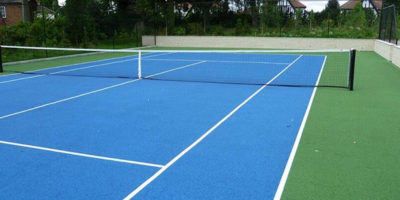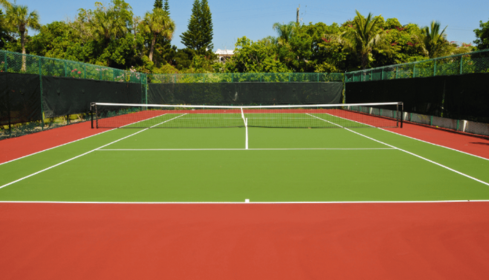When it comes to constructing a tennis court, selecting the right materials is essential for ensuring both performance and longevity. The type of material not only affects the playing experience but also determines the court’s maintenance needs, cost, and suitability for specific climates or levels of play. From the elite venues of professional tournaments to community recreational facilities, the tennis court materials used play a pivotal role in shaping the quality of the game.
Key Types of Tennis Court Materials
There are four primary types of surfaces used in tennis courts: hard courts, clay courts, grass courts, and synthetic surfaces. Each of these materials has unique properties that influence the speed of play, ball bounce, and player movement.
1. Hard Courts
Hard courts are among the most commonly used tennis court surfaces worldwide. They are typically constructed using asphalt or concrete as a base, which is then coated with acrylic layers to provide cushioning and color. Hard courts offer a medium-paced playing experience and are known for their consistent ball bounce. They are durable, low-maintenance, and ideal for all levels of play.
Pros:
- Long-lasting with minimal maintenance
- Consistent and predictable bounce
- Suitable for indoor and outdoor use
Cons:
- Can be hard on the body due to reduced shock absorption
- Susceptible to cracks in extreme weather conditions
2. Clay Courts
Clay courts are made from crushed shale, stone, or brick. These surfaces are slower than hard courts and are known for producing high-bouncing balls, favoring baseline players. Red clay courts are popular in Europe and South America, while green clay (Har-Tru) is commonly used in the United States.
Pros:
- Softer on joints, reducing the risk of injury
- Promotes longer rallies, enhancing endurance and strategy
Cons:
- Requires regular maintenance to preserve quality
- Play can be affected by rain and moisture
3. Grass Courts
Grass courts offer the fastest gameplay and are considered traditional and prestigious, famously used at Wimbledon. They are constructed using natural grass grown over compacted soil. These courts demand regular upkeep, including mowing, watering, and leveling.
Pros:
- Fast-paced play with low ball bounce
- Soft on the body, reducing impact injuries
Cons:
- High maintenance and sensitive to weather
- Costly to install and maintain
4. Synthetic/Artificial Surfaces
Synthetic surfaces such as artificial grass or turf and cushioned acrylic courts combine the characteristics of natural surfaces with added durability. These materials are often used for multi-sport courts or in areas with challenging weather conditions.
Pros:
- Lower maintenance compared to natural surfaces
- Consistent playing conditions throughout the year
Cons:
- May not replicate the feel of traditional materials
- Can heat up in sunny weather, affecting playability
Choosing the Right Material
Selecting the appropriate material for a tennis court depends on several factors, including budget, intended usage, climate, and player preferences. For instance, clubs catering to professional training may opt for clay or hard courts, while community parks might favor synthetic surfaces for their ease of upkeep.
Location plays a crucial role as well. In rainy or humid regions, hard or synthetic surfaces are more practical than clay or grass, which can become slippery or uneven. Conversely, clay courts can be a better choice in dry areas where water absorption is less of a concern.
Maintenance Considerations
Regardless of the surface type, proper maintenance is key to extending the life of the court. Hard courts require occasional resurfacing, clay courts need daily sweeping and watering, and grass courts must be meticulously mowed and leveled. Investing in quality materials and regular care ensures safe play and protects the investment.
Conclusion
Choosing the best tennis court materials involves balancing performance, durability, and cost. Whether building a court for professional competition or recreational enjoyment, understanding the pros and cons of each surface helps in making an informed decision. Ultimately, the right material enhances gameplay, ensures player safety, and adds long-term value to the facility.




